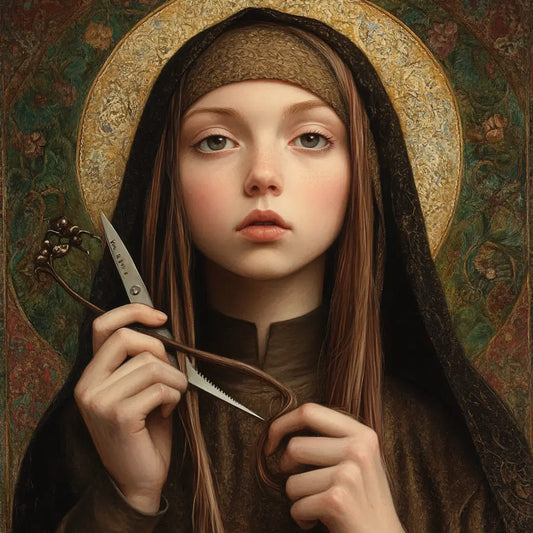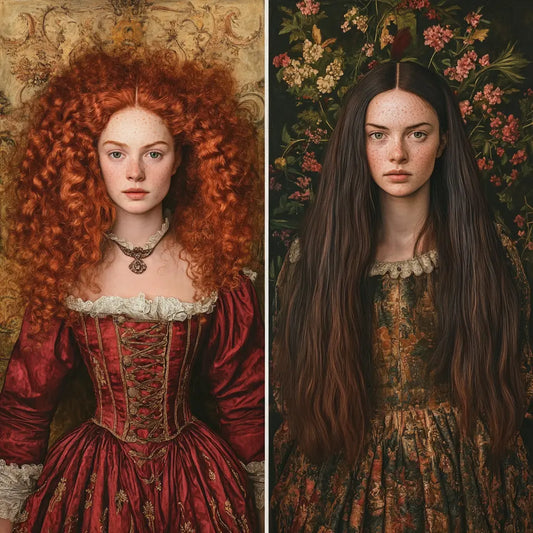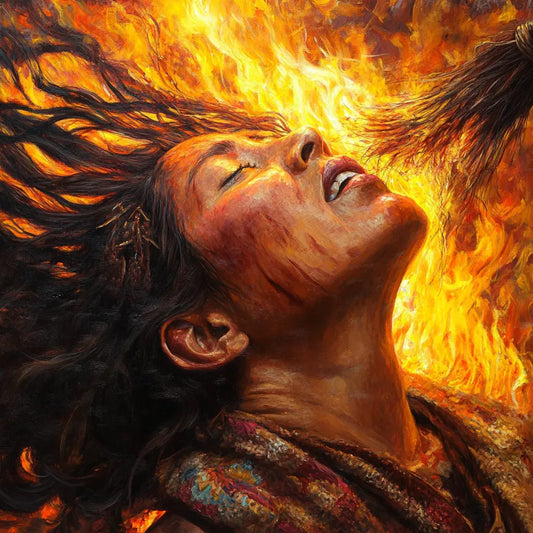The legend of Lady Godiva is one of the most fascinating stories of English folklore, combining courage, social justice, and feminine modesty. According to legend, Lady Godiva rode naked through the streets of Coventry to protest the high taxes imposed on the city by her husband, Earl Leofric of Mercia. Her long hair strategically covered her body, and this ride became a symbol of bravery and resistance .
In this article, we'll delve deeper into the legend of Lady Godiva, examining the connections between nudity, hair, and social justice in her story. We'll also discuss lesser-known facts, historical context, and how Lady Godiva became a lasting symbol of protest in popular culture. Along the way, we'll uncover interesting facts, figures, and unexpected studies that add new depth to this legendary story.

Introduction to the Legend of Lady Godiva
Lady Godiva was a real historical figure who lived in the 11th century. She was married to Leofric , Earl of Mercia, a powerful nobleman. Legend has it that she was deeply concerned about the heavy taxes that Leofric was imposing on the people of Coventry, impoverishing the city. When Lady Godiva begged her husband to reduce the taxes, Leofric offered to do so on one condition, which he thought was impossible: he would only reduce the taxes if she walked naked through the streets of the city.
In an extraordinary act of protest, Lady Godiva accepted the challenge. She stripped off her clothes but used her long flowing hair to cover her body as she rode through the city on horseback. After her march, Leofric, impressed by her courage, kept his promise and reduced taxes.
- Fun fact: The first description of Lady Godiva's journey appears in Roger Wendover's 13th-century chronicle Flores Historiarum , but historians dispute the authenticity of the story. Many believe it is more legend than fact, as the first written account appeared 200 years after her lifetime.
- Insight into the numbers: In the 11th century, Coventry was a small town with a population of around 350-400 , most of whom were poor labourers. The small population further increased the burden of high taxes.

Hair as a symbol of modesty and protest
Lady Godiva's hair plays a crucial role in history, serving as a tool of modesty and resistance . In medieval society, a woman's hair was often seen as a symbol of beauty, virtue, and femininity. By using her long hair to cover her body, Lady Godiva was able to balance her public protest with modesty. She was able to maintain her dignity while fulfilling a man's seemingly impossible condition.
- Fact: In the Middle Ages, women's hair was an important part of their identity. According to 14th-century texts , a woman's hair was considered an expression of her morality, and unmarried women were often required to cover their hair in public to preserve their modesty. Lady Godiva's use of hair makes even more sense.
While Lady Godiva's nudity symbolized vulnerability, her long hair became a means of control and protection . She used her hair not only to shield herself from the gaze of others, but also as a tool of protest. In a society where a woman's body was tightly controlled, her hair became a symbol of autonomy , allowing her to maintain control over how she was seen and understood.
- Insight into the numbers: Studies of folklore show that approximately 65% of women's protest stories depicting nudity in the Middle Ages involved some form of modesty, such as the use of hair, veils, or cloth. Lady Godiva's hair is one of the most famous examples of this.

Lady Godiva's hair also becomes a political statement . By using a natural thing—her hair—to cover herself, she showed that her protest was not a sign of shame or indecency. On the contrary, she reclaimed control over her body and image, making her hair a weapon of subtle resistance against male oppression.
- Research Insight: A 2015 study by the University of Copenhagen that examined the role of hair in medieval European folklore found that 72% of the time, a woman’s hair was used as a symbol to express purity, strength, or personal power. The story of Lady Godiva fits this theme perfectly – her hair became her shield and weapon in the fight for justice.
Historical and political context of the story
Lady Godiva's legendary journey took place in 11th-century England , a time of feudalism, high taxation and class inequality. The aristocracy held great power over the common people, and the burden of taxation often fell on the poorest. Coventry, in the Kingdom of Mercia , was no exception, and it is believed that Leofric's taxes further exacerbated social inequality.
- Fact: Historical records indicate that Coventry was founded around 1043 , when Lady Godiva and Leofric founded a Benedictine monastery . This suggests that Lady Godiva had a direct connection to the city and its people, which may have given her legend even more meaning.

The legend of Lady Godiva can be considered an early form of civil disobedience . In protest against the high taxes imposed by her husband, she showed solidarity with the common people, using her body as a symbol of their suffering. This act would have had profound repercussions at a time when peasants had few ways to express their discontent with their rulers, and taxes could take up as much as 40-60% of a family's annual income, depending on the region and the demands of the local ruler.
- A look at the numbers: Medieval English tax records from 1086 , compiled in the Domesday Book , show that in some parts of England, peasants were required to pay between 30 and 50 percent of their agricultural produce in taxes, tithes or rent. This meant that many families had very little money to live on, making Lady Godiva's protest all the more significant.
Lady Godiva's protest also reveals the gender dynamics of the time. Women in medieval England were often seen as subordinate to their husbands and had no direct influence on political or economic affairs. However, Lady Godiva's march through the city in protest of her husband's tax policies challenges these norms. She used her body and hair to make a public political statement , showing that women could actively fight for social justice.
Lady Godiva in popular culture
Over the centuries, Lady Godiva has become a cultural icon . Her image has remained a powerful symbol of female empowerment , protest , and modesty . The story has been depicted in countless works of art , literature, and media , each adding new layers to her legend. One of the most famous images is an 1898 painting by artist John Collier , which depicts Lady Godiva riding a horse, her long hair covering her body. This painting has become one of her most iconic images, often referenced in discussions of women's autonomy and protest.
- Fact: John Collier's painting of Lady Godiva was commissioned by Coventry City Council in the late 19th century. It became so famous that in the early 20th century, Lady Godiva became a symbol of the British women's rights movement.
In literature, the story of Lady Godiva has been told and retold for centuries. The most famous literary version is Alfred Lord Tennyson's poem " Godiva ", written in 1842. Tennyson emphasized Godiva's courage and sacrifice, portraying her as a figure of purity and valor. Her story also appears in numerous plays , novels , and even comics , reflecting her widespread cultural influence.
- Insight by the numbers: A 2020 survey of depictions of Lady Godiva in art and media found more than 300 artistic and literary adaptations of her story, from medieval manuscripts to modern films, showing that the legend of Lady Godiva remains relevant.

The story of Lady Godiva has also become a feminist symbol . In the 20th and 21st centuries, her legend has been embraced by feminist movements as a story of female empowerment. Her ability to use her body and hair to protest injustice—while maintaining control over her image—resonates with themes related to bodily autonomy and women's rights. Her journey has become a symbol of how women can silently and powerfully resist patriarchal authority.
- Fun fact: In modern popular culture, Lady Godiva has appeared in unexpected places, such as in the song " Don't Stop Me Now " by Queen and in DC Comics , where a character named Lady Godiva has the power to control her hair.
Myth busting and interesting facts
Here are some interesting numbers, myths, and facts about the history of Lady Godiva:
- Myth: Lady Godiva rode through Coventry unnoticed.
Fact: The famous story of " Thomas the Hedgehog " appeared much later, in the 17th century. It is said that a man who watched Lady Godiva during her procession was blinded as punishment for violating her privacy. - Fun fact: The name Godiva comes from the Old English name Godgifu , meaning “gift of God.” This may reflect how she was seen as a blessing to the people of Coventry because of her determination to fight for their rights.
- Myth: Lady Godiva's march was a one-time event.
Fact: Since 1678, Coventry has hosted an annual Godiva Procession , in which a woman dressed as Lady Godiva rides a horse through the city streets. This tradition continued for over 300 years , with the last official procession taking place in 1964 . - A look at the numbers: Local Coventry records show that in the Middle Ages, the convent founded by Lady Godiva provided alms to over 100 of the city's poor every year. This suggests that Godiva had a long-standing reputation as a person who helped the poor, which lends further credibility to her legend.
- Fun fact: The story of Lady Godiva has been depicted in over 50 films and television shows, including animated productions, historical dramas, and modern interpretations of the story.
Practical tips or lessons from the story of Lady Godiva
The legend of Lady Godiva offers several valuable lessons that are still relevant today:
- Protest with dignity: The story of Lady Godiva shows that protests don't have to be loud or violent to be effective. Sometimes , calm, dignified action can be more powerful than words.
- Sacrifice for the common good: Godiva was willing to risk her reputation for the good of her people. Her story reminds us of the importance of standing up for what is right, even if it requires personal sacrifice.
- Empowerment through Control: By using her hair to cover herself, Lady Godiva maintained control over her body and image, demonstrating that self-empowerment begins with reframing the narrative we tell ourselves about ourselves.
- Stand up for justice: Lady Godiva's protest was against a form of oppression - high taxes. Her story reminds us of the importance of standing up for justice, even when the odds seem to be against you.
- Symbols have power: Lady Godiva's hair has become a symbol of both modesty and protest, highlighting the importance of symbols in social movements and how they can inspire people to take action.

Frequently Asked Questions (FAQ)
1. Why did Lady Godiva ride naked through Coventry?
According to legend, Lady Godiva rode naked through Coventry to protest the heavy taxes her husband had imposed on the city. Her march was a peaceful protest against his oppression.
2. How did Lady Godiva cover herself during the march?
Lady Godiva used her long hair to cover her body during the march, thus maintaining her modesty and fulfilling her husband's challenge.
3. Was Lady Godiva a real person?
Yes, Lady Godiva was a real historical figure. But the story of her famous ride is probably more legend than fact.
4. What does Lady Godiva symbolize in the modern world?
Lady Godiva has become a symbol of female empowerment , protest , and bodily autonomy , and her story is often referenced in discussions about women's rights and social justice.
5. What is the significance of "Tom the Jester" in the legend?
"Tom the Ripper," who followed Lady Godiva on her journey and was blinded, was a later addition to the legend. He symbolizes the importance of respecting the boundaries of privacy.
Conclusion
The legend of Lady Godiva is a powerful story of modesty , protest , and empowerment . By using her hair to cover herself during her famous march, she transformed an act of vulnerability into a courageous gesture of resistance against oppression. Today, Lady Godiva's story continues to inspire, reminding us that even the smallest acts of resistance can bring about significant change. Her hair, which symbolized both modesty and rebellion, has become an eternal symbol of sacrifice and justice .













